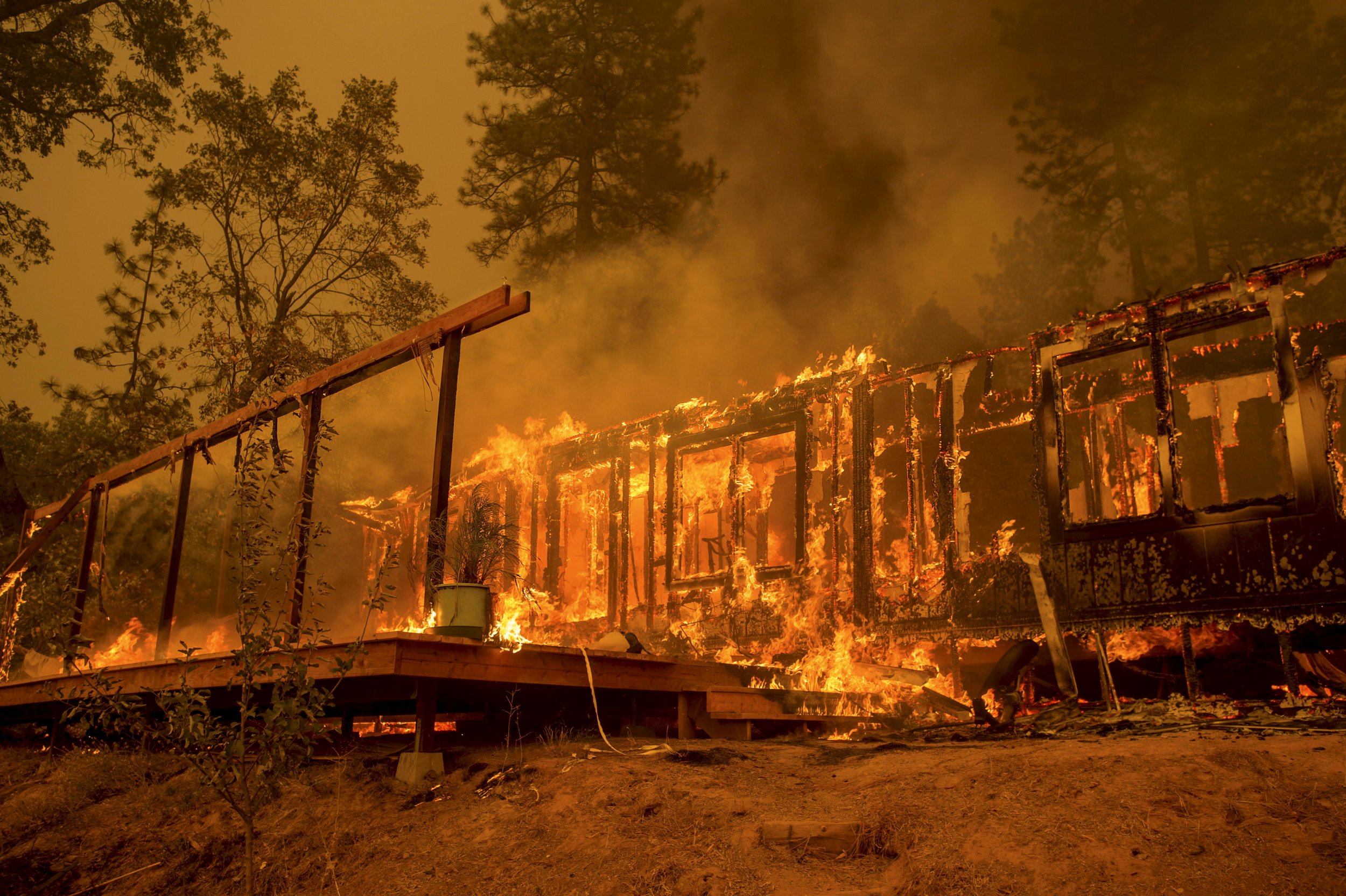
This story was originally published by Reveal and is reproduced here as part of the Climate Desk collaboration.
Throughout the West, temperatures are climbing, vegetation is drying out, and snow is melting. These are signs of summer, which officially started this week.
But with summer comes fire.
A dozen large blazes already are burning throughout the country, mostly in the Southwest, Southern California and Alaska. And more fires are on the way, according to the National Interagency Fire Center's seasonal outlook.
The fire center bases its predictions on a variety of factors—drought, vegetation health, weather patterns, climate and snowpack levels. Depending on the area and time of year, different factors weigh more heavily.
"The best analogy I can give is the Swiss cheese approach," said Jeremy Sullens, a wildfire analyst for the fire center. "We layer a lot of different layers together and where the holes all line up is where we form our areas of concern. We never look at the same variables in the same way from month to month."
As of last week, the country has seen more than 23,000 fires burn a combined 1.9 million acres this year, according to the National Interagency Coordination Center. By this time last year, about 559,000 acres had burned.
Last year, the U.S. had fewer fires, according to the coordination center's annual report. But those fires scorched a combined 10.1 million acres, more than twice the 10-year average and the most in one year since at least 1960.
And this year's fire season was preceded by a devastating blaze that destroyed thousands of homes in Alberta, Canada. The Fort McMurray Wildfire was discovered May 1 and has consumed at least 1.5 million acres. It's still burning more than a month later.
As fire season begins, one area of particular concern to fire officials is Central California, where drought combined with bark beetle infestations has left behind millions of dead trees, creating a massive fire hazard. More than a dozen fires already have been spotted in the lower elevations of Southern California, where winter rainfall was well below normal.
But California isn't the only area officials are keeping an eye on.
Because Alaska had such a mild winter, leaving little snow on the ground, the fire season began early. More than 15 fires from 2015 apparently have re-ignited. Known as holdover fires, these are common in Alaska, where the forest floor has a thick layer of moss, twigs, leaves, needles and other forest detritus.
Fire can burn deep into this layer, beyond where moisture can penetrate. Once there, it can smolder for months at a time before re-emerging. This year, there has been an unusually high number of holdover fires, according to the Alaska Division of Forestry.
In the lower 48 states, many regions are preparing for a round of fast-moving blazes as fire danger climbs in what is known as fine fuels—grasses and shrubs that grow rapidly after receiving moisture, but also dry out quickly. As June turns to July, that fire danger will climb in elevation and move into heavier fuels such as timber.
This is the case in Oregon and Washington, where at least six fires were burning earlier this month. May was unusually warm and dry in the Northwest, with the snowpack all but melted in many locations.
As summer progresses, the fire danger will move north and into higher elevations. A strengthening La Niña combined with a weak monsoon season likely will usher in dry conditions in late summer and fall.
The National Interagency Fire Center outlook noted that the Great Basin—which spans Nevada, Utah and portions of Idaho and Wyoming—also is an area of concern because grasses, which can act as kindling for larger fire fuels, have flourished after more rain than normal.
Arizona and New Mexico also are primed for a round of grass fires, particularly below the Mogollon Rim.
Fire activity varies by region seasonally. The East Coast typically sees more fires during the winter months. As May approaches, that danger moves westward. Fires in the West traditionally peak during the late summer and fall months. At the same time, Florida and Southern states start to see an increase in fire activity, which slowly increases in intensity and moves north as winter begins.
Uncommon Knowledge
Newsweek is committed to challenging conventional wisdom and finding connections in the search for common ground.
Newsweek is committed to challenging conventional wisdom and finding connections in the search for common ground.
About the writer
To read how Newsweek uses AI as a newsroom tool, Click here.








